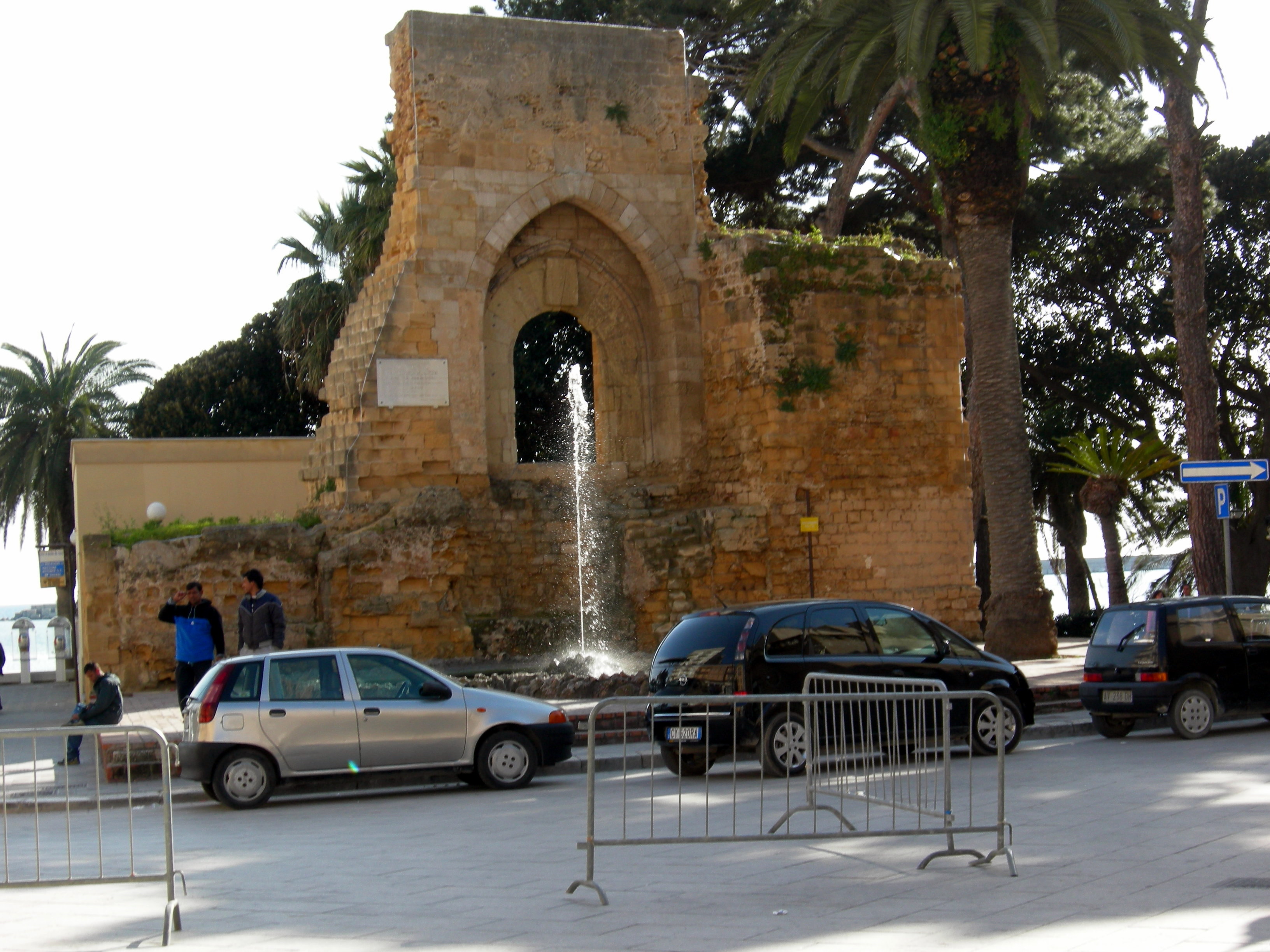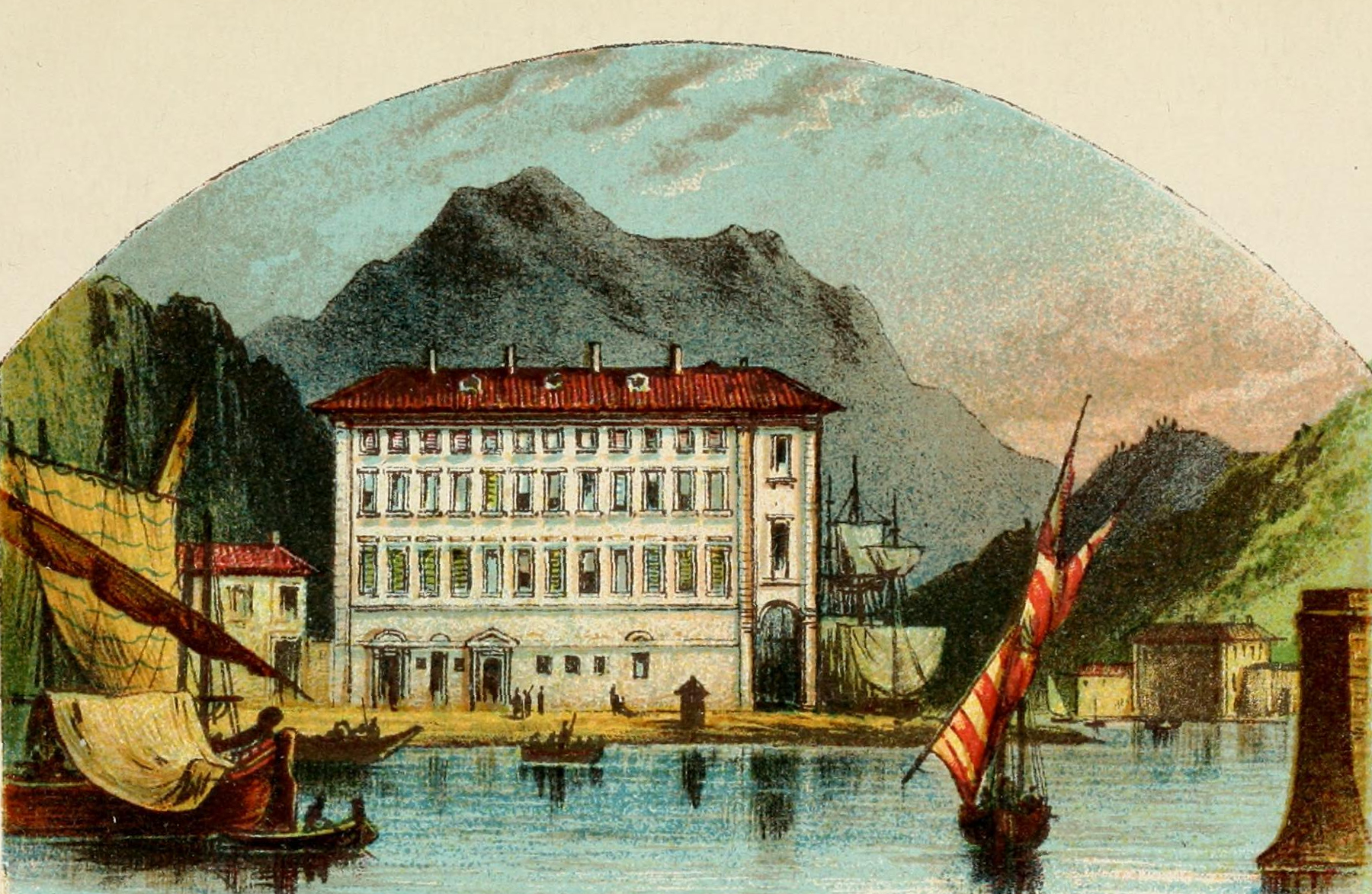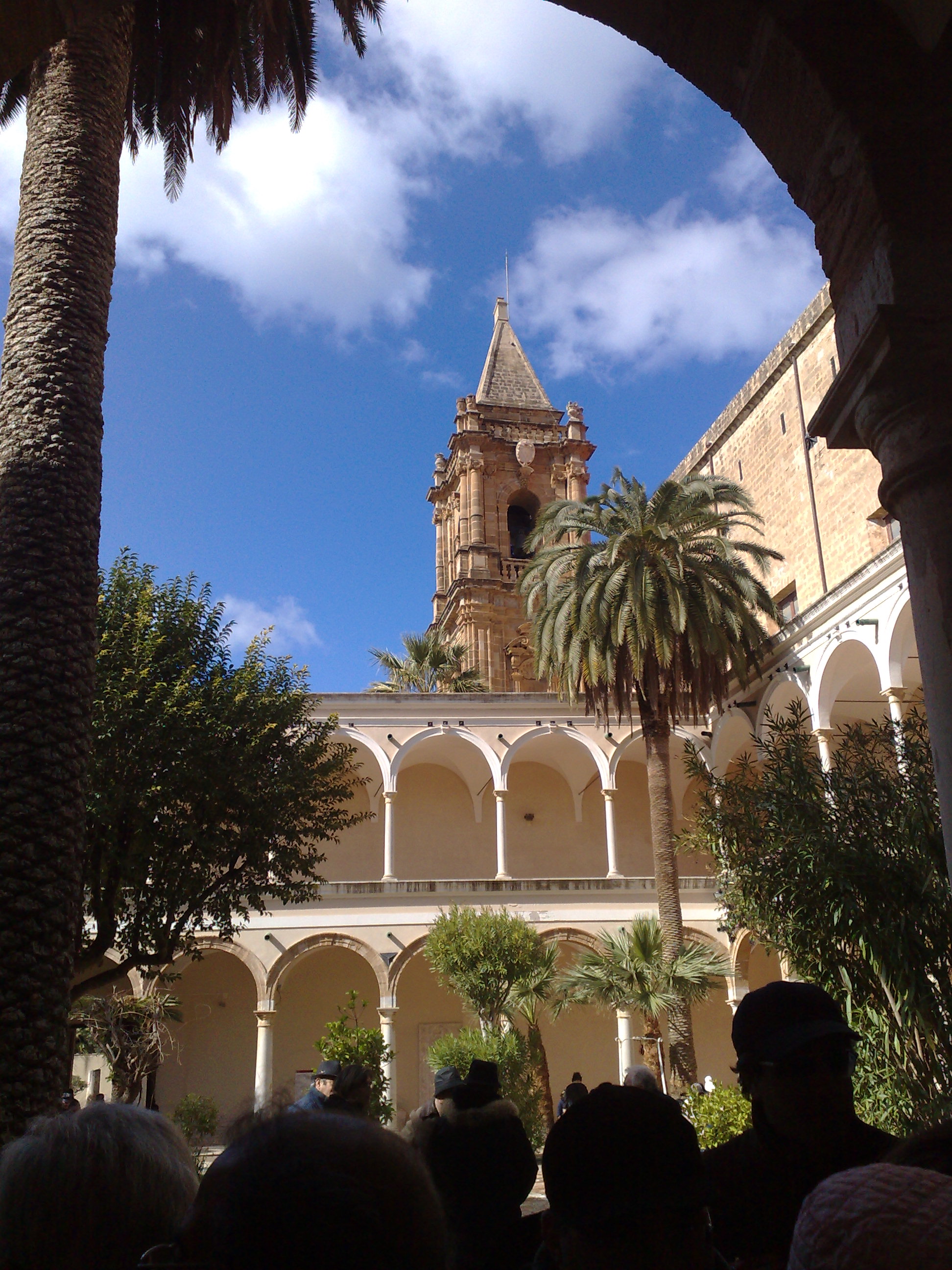|
Marsala
Marsala (, local ; la, Lilybaeum) is an Italian town located in the Province of Trapani in the westernmost part of Sicily. Marsala is the most populated town in its province and the fifth in Sicily. The town is famous for the docking of Giuseppe Garibaldi on 11 May 1860 (the ''Expedition of the Thousand'') and for its Marsala wine. A feature of the area is the Stagnone Lagoon Natural Reserve – a marine area with salt ponds. Marsala is built on the ruins of the ancient Carthaginian city of Lilybaeum, and includes in its territory the archaeological site of the island of Motya, an ancient Phoenician town. The modern name likely derived from the Arabic (''marsā ʿaliyy'', "Ali's harbor"), or possibly (''marsā llāh'', "God's harbor"). Geography Situated at the extreme western point of Sicily, the town was founded on Lilibeo Cape from where the Aegadian Islands and the Stagnone Lagoon can be seen. Territory The territory of Marsala, , has a rich cultural and landscap ... [...More Info...] [...Related Items...] OR: [Wikipedia] [Google] [Baidu] |
Marsala Wine
Marsala is a fortified wine, dry or sweet, produced in the region surrounding the Italian city of Marsala in Sicily. Marsala first received ''Denominazione di Origine Controllata'' (DOC) status in 1969. The European Union grants Protected Designation of Origin (PDO) status to Marsala, and most other countries limit the use of the term ''Marsala'' to products from the Marsala area. While unfortified wine is also produced in the Marsala region, it does not qualify for the Marsala DOC. History Marsala fortified wine was probably first popularized outside Sicily by the English trader John Woodhouse. In 1773, he landed at the port of Marsala and discovered the local wine produced in the region, which was aged in wooden casks and tasted similar to Spanish and Portuguese fortified wines then popular in England. Fortified Marsala was, and is, made using a process called ''in perpetuum'', which is similar to the ''solera'' system used to produce Sherry in Jerez, Spain. Woodhouse rec ... [...More Info...] [...Related Items...] OR: [Wikipedia] [Google] [Baidu] |
Sicily
(man) it, Siciliana (woman) , population_note = , population_blank1_title = , population_blank1 = , demographics_type1 = Ethnicity , demographics1_footnotes = , demographics1_title1 = Sicilian , demographics1_info1 = 98% , demographics1_title2 = , demographics1_info2 = , demographics1_title3 = , demographics1_info3 = , timezone1 = CET , utc_offset1 = +1 , timezone1_DST = CEST , utc_offset1_DST = +2 , postal_code_type = , postal_code = , area_code_type = ISO 3166 code , area_code = IT-82 , blank_name_sec1 = GDP (nominal) , blank_info_sec1 = €89.2 billion (2018) , blank1_name_sec1 = GDP per capita , blank1_info_sec1 ... [...More Info...] [...Related Items...] OR: [Wikipedia] [Google] [Baidu] |
Motya
Motya was an ancient and powerful city on San Pantaleo Island off the west coast of Sicily, in the Stagnone Lagoon between Drepanum (modern Trapani) and Lilybaeum (modern Marsala). It is within the present-day commune of Marsala, Italy. Many of the city's ancient monuments have been excavated and are visible today. Motya has become known for the marble statue of the Motya Charioteer, found in 1979 and on display at the local Giuseppe Whitaker museum. Names The Carthaginian settlement was written in their abjad as ( xpu, 𐤄𐤌𐤈𐤅𐤀) or ( xpu, 𐤌𐤈𐤅𐤀, possibly ''Motye''). The name seems to derive from the Phoenician triliteral root , which would give it the meaning of "a wool-spinning center". Motya is the latinization of the island's Greek name, variously written ''Motýa'' () or ''Motýē'' (). The Greeks claimed the place was named for a woman named Motya whom they connected with the myths around Hercules. The town's Italian name appears as both ... [...More Info...] [...Related Items...] OR: [Wikipedia] [Google] [Baidu] |
Mozia
Motya was an ancient and powerful city on San Pantaleo Island off the west coast of Sicily, in the Stagnone Lagoon between Drepanum (modern Trapani) and Lilybaeum (modern Marsala). It is within the present-day comune, commune of Marsala, Italy. Many of the city's ancient monuments have been excavated and are visible today. Motya has become known for the marble statue of the Motya Charioteer, found in 1979 and on display at the local Giuseppe Whitaker museum. Names The Carthaginian settlement was written in their abjad as ( xpu, 𐤄𐤌𐤈𐤅𐤀) or ( xpu, 𐤌𐤈𐤅𐤀, possibly ''Motye''). The name seems to derive from the Phoenician language, Phoenician triliteral root , which would give it the meaning of "a wool-spinning center". Motya is the latinization of names, latinization of the island's ancient Greek language, Greek name, variously written ''Motýa'' () or ''Motýē'' (). The Greeks folk etymology, claimed the place was named for a woman named Motya wh ... [...More Info...] [...Related Items...] OR: [Wikipedia] [Google] [Baidu] |
Province Of Trapani
Trapani ( it, Provincia di Trapani, scn, Pruvincia di Tràpani; officially ''Libero consorzio comunale di Trapani'') is a province in the autonomous island region of Sicily, southern Italy. Following the suppression of the Sicilian provinces, it was replaced in 2015 by the Free municipal consortium of Trapani. Its capital is the city of Trapani. It has an area of and a total population of 433,826 (2017). There are 25 comunes (Italian: ''comuni'') in the province (see Comuni of the Province of Trapani). History The area now covered by the province was occupied successively by the Carthaginians, Greeks and latterly by the Romans. The port of Trapani, first known as Drepana, then Drepanon, was inhabited by the Sicani and the Elymi becoming a prosperous Phoenician trading centre by the 8th century BC. It was taken by the Carthaginians in 260 BC and by the Romans in 240 BC, becoming a ''civitas romana'' until 440 AD when it was sacked by the Vandals, then by the Byzantines and ult ... [...More Info...] [...Related Items...] OR: [Wikipedia] [Google] [Baidu] |
Expedition Of The Thousand
The Expedition of the Thousand ( it, Spedizione dei Mille) was an event of the Italian Risorgimento that took place in 1860. A corps of volunteers led by Giuseppe Garibaldi sailed from Quarto, near Genoa (now Quarto dei Mille) and landed in Marsala, Sicily, in order to conquer the Kingdom of the Two Sicilies, ruled by the House of Bourbon-Two Sicilies. The project was an ambitious and risky venture aiming to conquer, with a thousand men, a kingdom with a larger regular army and a more powerful navy. The expedition was a success and concluded with a plebiscite that brought Naples and Sicily into the Kingdom of Sardinia, the last territorial conquest before the proclamation of the Kingdom of Italy on 17 March 1861. The sea venture was the only desired action that was jointly decided by the "four fathers of the nation" Giuseppe Mazzini, Giuseppe Garibaldi, Victor Emmanuel II, and Camillo Cavour, pursuing divergent goals. However, the Expedition was instigated by Francesco Cris ... [...More Info...] [...Related Items...] OR: [Wikipedia] [Google] [Baidu] |
Mazara Del Vallo
Mazara del Vallo (; ) is a town and ''comune'' in the province of Trapani, southwestern Sicily, Italy. It lies mainly on the left bank at the mouth of the Mazaro river. It is an agricultural and fishing centre and its port gives shelter to the largest fishing fleet in Italy. Recently it has been a hotspot for migrants from North Africa. History Etymology and origins Mazara was founded by the Phoenicians in the 9th century BC with the name of ''Mazar'' who made it an important mercantile emporium. The discovery of Phoenician vases demonstrate the existence of a Phoenician port built between the 6th and 5th centuries BC. Other evidence is in the palace of the Knights of Malta, where finds show the existence of the ancient Punic trading post. Also a stone slab engraved with a Phoenician inscription found in the channel of the river Màzaro is now preserved in the Museum of the Dancing Satyr. It then passed under the control of Greeks, Carthaginians, Romans, Vandals, Ostrogot ... [...More Info...] [...Related Items...] OR: [Wikipedia] [Google] [Baidu] |
Petrosino
Petrosino ( Sicilian: ''Pitrusinu'') is a town and ''comune'' in Sicily, Italy, administratively part of the province of Trapani, located between the municipalities of Marsala and Mazara del Vallo Mazara del Vallo (; ) is a town and ''comune'' in the province of Trapani, southwestern Sicily, Italy. It lies mainly on the left bank at the mouth of the Mazaro river. It is an agricultural and fishing centre and its port gives shelter to the .... Municipalities of the Province of Trapani {{Sicily-stub ... [...More Info...] [...Related Items...] OR: [Wikipedia] [Google] [Baidu] |
Stagnone Lagoon
The Stagnone Lagoon is a part of Mediterranean Sea in front of Marsala City (Trapani province, autonomous region of Sicily); the Lagoon is delimited by an island called Isola Lunga (formerly stinco di Capra) because of its geographical long form. Inside the Lagoon there are the famous Mozia Motya was an ancient and powerful city on San Pantaleo Island off the west coast of Sicily, in the Stagnone Lagoon between Drepanum (modern Trapani) and Lilybaeum (modern Marsala). It is within the present-day commune of Marsala, Italy. Man ... island and another small island called Santa Maria. The water level in the lagoon varies from a few centimetres to a maximum of 2 metres. A peculiarity of the Stagnone is that, during summer, the water is always hot due to its low level and the lagoon conformation. See also * Venetian Lagoon * Marano lagoon References {{coord missing, Italy Lagoons of Italy ... [...More Info...] [...Related Items...] OR: [Wikipedia] [Google] [Baidu] |
Aegadian Islands
The Aegadian Islands ( it, Isole Egadi; scn, Ìsuli Ègadi, la, Aegates Insulae; gr, Aἰγάται Νῆσοι, , the islands of goats) are a group of five small mountainous islands in the Mediterranean Sea off the northwest coast of Sicily, Italy, near the cities of Trapani and Marsala, with a total area of . The island of Favignana (''Aegusa''), the largest, lies southwest of Trapani; Levanzo (''Phorbantia'') lies west; and Marettimo, the ancient ''Hiera Nesos'', west of Trapani, is now reckoned as a part of the group. There are also two minor islands, Formica and Maraone, lying between Levanzo and Sicily. For administrative purposes the archipelago constitutes the comune of Favignana in the Province of Trapani. The overall population in 2017 was 4,292. Winter frost is unknown and rainfall is low. The main occupation of the islanders is fishing, and the largest tuna fishery in Sicily is there. History There is evidence of Neolithic and even Paleolithic paintings in ... [...More Info...] [...Related Items...] OR: [Wikipedia] [Google] [Baidu] |
Giuseppe Garibaldi
Giuseppe Maria Garibaldi ( , ;In his native Ligurian language, he is known as ''Gioxeppe Gaibado''. In his particular Niçard dialect of Ligurian, he was known as ''Jousé'' or ''Josep''. 4 July 1807 – 2 June 1882) was an Italian general, patriot, revolutionary and republican. He contributed to Italian unification and the creation of the Kingdom of Italy. He is considered one of the greatest generals of modern times and one of Italy's " fathers of the fatherland", along with Camillo Benso, Count of Cavour, Victor Emmanuel II of Italy and Giuseppe Mazzini. Garibaldi is also known as the "''Hero of the Two Worlds''" because of his military enterprises in South America and Europe. Garibaldi was a follower of the Italian nationalist Mazzini and embraced the republican nationalism of the Young Italy movement. He became a supporter of Italian unification under a democratic republican government. However, breaking with Mazzini, he pragmatically allied himself with the monarchist Ca ... [...More Info...] [...Related Items...] OR: [Wikipedia] [Google] [Baidu] |
Trapani
Trapani ( , ; scn, Tràpani ; lat, Drepanum; grc, Δρέπανον) is a city and municipality (''comune'') on the west coast of Sicily, in Italy. It is the capital of the Province of Trapani. Founded by Elymians, the city is still an important fishing port and the main gateway to the nearby Egadi Islands. History Drepana was founded by the Elymians to serve as the port of the nearby city of Eryx (present-day Erice), which overlooks it from Monte Erice. The city sits on a low-lying promontory jutting out into the Mediterranean Sea. It was originally named ''Drépanon'' from the Greek word for "sickle", because of the curving shape of its harbour. Carthage seized control of the city in 260BC, subsequently making it an important naval base, but ceded it to Rome in 241BC following the Battle of the Aegates in the First Punic War. Two ancient legends relate supposed mythical origins for the city. In the first legend, Trapani stemmed from the sickle which fell from the hands o ... [...More Info...] [...Related Items...] OR: [Wikipedia] [Google] [Baidu] |






